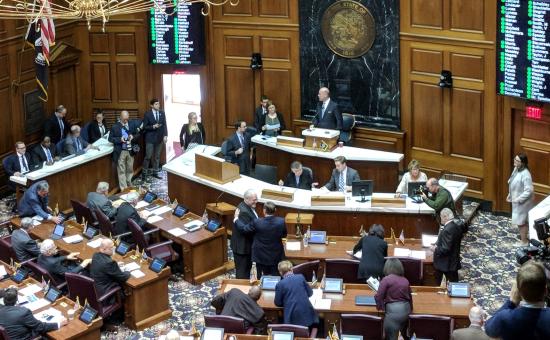Budget bill shows progress in funding schools, but is not enough
02/21/2019
The House Republican budget and school funding formula were made public Tuesday outlining where schools stand on increases to funding and educator compensation.
The budget bill, HB 1001, currently calls for regular education funding increases of 2.1 percent next year and 2.2 percent the next. The House also includes the governor’s pension relief savings proposal that has the effect of increasing dollars at the local level to become available for salaries.
This draft of the budget reflects some progress from the introduced version, but it’s not enough.
This version does not demonstrate the level of commitment to increasing teacher salaries that we’ve heard from lawmakers and the governor since before the session began.
Advocates need to raise their voice and take action.
Along with the budget, we now have a published school funding formula run. This is an estimate showing what each school district’s projected increases (or decreases) will be under the current budget bill. The funding run can be found on the House Republicans’ website.
The funding run includes a cover page with statewide totals. School districts are listed by identification numbers which are listed in alpha-county order. For example, Adams County school districts appear at the top of the document and you will scroll down to Whitley County Consolidated Schools toward the back. Private school voucher and charter school data appear at the end of the document.
Total regular education funding is clearly listed for each school district with the projected percentage change from one year to the next. As well as total funding under the formula. This appears after special education, career and technical education and academic honors grants.
Educators and the students they serve expect and deserve more. If we’re serious about our kids’ futures, we need to get serious about doing what works. That means investing in educators – paying them as professionals – and making sure our kids have the resources they need to be successful and productive citizens. It’s time for our elected officials to deliver on their commitment to make teacher compensation a priority this session.
